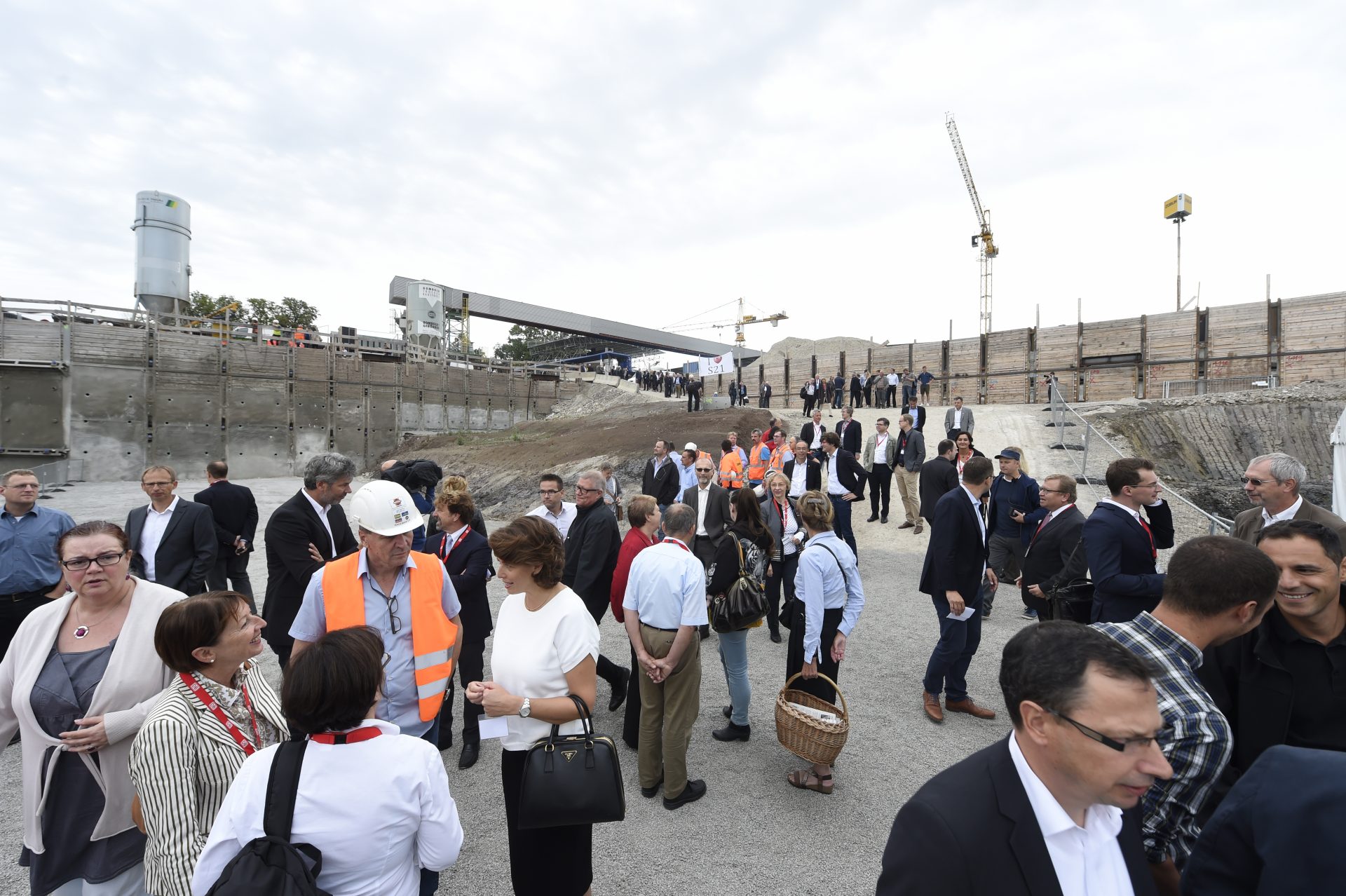News from 16.09.2016
Laying of the foundation stone at Stuttgart Central Station
Deutsche Bahn AG celebrated the laying of the foundation stone for the future Stuttgart Central Station with numerous guests of honor in attendance. In a symbolic act, the foundation stone for the central structure of the Stuttgart-Ulm rail project was laid on the first concreted section of the station's floor slab.
"With the future Stuttgart Central Station, we are not only building an architecturally valuable station, but above all enabling an efficient transport hub for the future. Millions of passengers will benefit from shorter travel times, new direct connections and expanded services - and the entire city from 100 hectares of urban development space right in the center," said Dr. Rüdiger Grube, CEO of Deutsche Bahn AG, in his speech.
"Stuttgart 21 is a project for the future because it strengthens environmentally friendly rail and moves traffic underground. Noise disappears and land is freed up where rusty tracks now lie. The majority of citizens in Baden-Württemberg are in favor of the project for these reasons," said Norbert Barthle, Parliamentary State Secretary to the Federal Minister of Transport.
"The state has a major interest in the successful progress of "Stuttgart 21"; the project is of immense importance for Baden-Württemberg as a business location. We will be optimally integrated into the European high-speed network of the future. In addition, there will be better connections across the board and sometimes drastic reductions in travel times. An infrastructure that enables such leaps in quality makes Baden-Württemberg even more attractive for local companies, but also for potential new investors," said Dr. Nicole Hoffmeister-Kraut MdL, Minister of Economics, Labor and Housing of the State of Baden-Württemberg.
"For Stuttgart, today's laying of the foundation stone is a day of joy. The future central station is now taking concrete shape, opening up a development opportunity for Stuttgart and its region that is unique among European economic metropolises. We want to take advantage of these opportunities in constructive cooperation with the project partners and in dialog with the citizens," said Michael Föll, First Mayor of the state capital Stuttgart.
"After the travails of the debates about the traffic benefits of the project, we are now hopefully finally getting to the freestyle: namely, the discussion about the urban development opportunities for Stuttgart and the potentials in terms of regional development," said the chairman of the Verband Region Stuttgart, Thomas S. Bopp. This is because the new station offers, among other things, the opportunity to reconnect the neighborhoods on Neckarstrasse and Heilbronner Strasse. As a partner of Stuttgart 21 and the S-Bahn's taskmaster, the Verband Region Stuttgart continues to be prepared to "significantly expand" the S-Bahn's frequency, he added. However, he demanded efforts from all parties involved for a "noticeably" more punctual S-Bahn. "S-Bahns are the central nervous system of metropolitan areas. The question here is whether Germany should not formulate higher quality requirements for S-Bahn systems," Bopp said. He suggested talks "at the highest political level."
"Stuttgart, once commanded by the king of Württemberg into the valley close to the castle, is freed from its shackles by the lowering of the through tracks. The station itself, a low-lying yet light-flooded poetic spatial construction, is the architectural ambassador of a new railroad age of high speed and comfort. Above it, the Schlossgarten develops larger and more beautiful than ever; on both sides, to the Old and New Towns, it acts as a catalyst for the coming development," said architect Christoph Ingenhoven.
"As a traditional Stuttgart-based company, we are naturally very proud that we are able to play a key role in this internationally pioneering infrastructure project, which is immensely important for the future development of the region. We are convinced that we are the right partner for Deutsche Bahn in view of the technical challenges associated with this project," emphasized Klaus Pöllath, CEO of Ed. Züblin AG.
"When this state-of-the-art station is completed, tens of thousands of travelers will benefit every day and visitors from all over the world will marvel at this unique structure," said Manfred Leger, Chairman of the Management Board of DB Projekt Stuttgart-Ulm GmbH, leading into the ceremonial laying of the foundation stone.
The time capsule embedded in the foundation stone contains a model of an ICE train, the daily editions of the Stuttgarter Nachrichten, Stuttgarter Zeitung and the official gazette of the state capital Stuttgart, a set of euro coins and a certificate of the laying of the foundation stone.
You can find more information on this topic on our Partner site.



